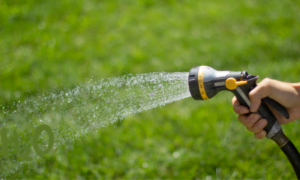If you are considering planting and cultivating a tree in your home quickly and with minimal care, Philodendron is an excellent choice. This plant can develop quickly and bring elegance to any area of your house by displaying its trailing tendrils next to windows or anywhere else inside. It creates an eye-catching image with its towering, luxuriant foliage falling downward. There are several species of philodendron, and each has distinct qualities of its own.
With my experience in planting and marketing Philodendron since 2016, I possess considerable expertise in cultivating this tree and addressing any related issues. Through this blog, I aim to provide comprehensive details about Philodendron, including planting and care instructions, ensuring you have the correct and detailed guidance for successful cultivation.

| Common Name | Philodendron |
| Botanical Name | Philodendron spp |
| Family | Araceae |
| Plant Type | Perennial |
| Mature Size | 6-72 in. Tall 6-36 in. wide |
| Soil Type | Loamy, well-drained |
| Soil pH | Acidic |
| Hardiness Zones | 9-11 (USDA) |
| Native Area | Central America, South America |
| Toxicity Area | Toxic to Humans and pets |
| Sun Exposure | Partial |
Although this plant usually needs very little upkeep, any necessary care should be given with great consideration. This plant should never be placed in direct sunlight but rather in a location where it will receive indirect sunlight. It should also not be put in locations with a lot of dust. Cleaning the plant’s leaves on a regular basis with a moist cloth is advised, as is making sure there is enough water present in the soil at the plant’s base by looking for firmness. Watering is required if the top one to two inches of soil are dry. It’s important to avoid overwatering since this can harm the roots of the plant. Watering plants should be done in moderation so as not to damage them.
I will now give thorough instructions on how to take care of this plant, covering everything like soil, watering, sunlight, fertilizer, etc. You will gain a clear understanding of how to properly care for it.
Growing and Caring for Philodendron
Light
Although you may already be aware that this plant doesn’t need any further care or maintenance, sunshine is generally crucial for this plant because too much of it can be harmful. It is therefore preferable to keep this plant out of direct sunlight at all times. It should be kept in a location with indirect light to guarantee that its leaves stay fresh and grow. If the green leaves of this plant are exposed to direct sunlight, they will burn, causing considerable damage and ultimately the plant’s death.
Soil

Soil plays a significant role in a plant because the normal growth and lifespan of a plant depend on the soil. In good soil, the plant can grow very well and survive for a long time. However, the plant cannot endure long in salinity-rich soil. As such, you need to be certain about the soil in which you intend to put this plant. Check the amount of salt in the soil. If you are sure that there is no salt content in the soil, you can select this soil. To ensure optimum soil quality for planting this tree, the soil must also be supplemented with organic fertilizers. Make sure there is a drainage system in place for the soil to remove extra water. This drainage system should be positioned on the opposite side of the tub or planting area so that salts created in the soil due to excessive watering can be drained out, ensuring the normal growth of the tree.
Water

This plant needs to be watered regularly to grow properly and keep its leaves and vines fresh because no plant or tree can survive without water. On the other hand, I can speak from personal experience when I state that this plant will flourish if given additional water. The plant will suffer greatly from this since over-watering might lead to root rot. Therefore, you need to make sure the soil has hardened at the plant’s base before watering it.
Additionally, clean the leaves of this plant on a regular basis with a damp cloth dipped in water to keep them glossy and attractive. This will greatly enhance the beauty of the leaves.
Temperature
For this plant, temperature is crucial; it should never be exposed to or maintained below 55 degrees Fahrenheit. So always try to keep this plant above 55 degrees F. This plant loves humidity, so regularly every few days the plant should be misted, i.e., keep water in a bottle and spray that water as mist. This will keep the normal growth of the plant, and the quality of the plant will be fine.
Fertilizing

There are some things you must know about fertilizing this plant. Fertilizer can be applied to this plant in liquid or solid form in the spring and summer. Pay close attention to the directions and apply the fertilizer as directed.
Pruning
Pruning is very beneficial for the plant. When a leaf or node dies, it should be cut off with a sharp, clean knife. This will get rid of any thorny growth and yellowing leaves, which will be of tremendous advantage to the plant. Pruning contributes to the health of the plant. For propagation, using stem cuttings will also function effectively.
Health Benefits of Having Philodendron in Your Home

Purifying the Air
- Because they can absorb toxic substances like benzene, trichloroethylene, and formaldehyde, philodendron plants have a natural ability to purify the air.
According to a NASA study, philodendrons may effectively remove indoor air contaminants, improving the quality of the air in your house.
Stress Reduction
- The presence of greenery has been proven to reduce stress levels and promote a sense of relaxation.
- By introducing philodendrons into your living space, you create a calming environment that can help alleviate anxiety and improve mental well-being.
Boosting Productivity
- Research has shown that indoor plants like philodendrons can enhance concentration and productivity.
- You might be more focused and productive when working or studying with these green friends nearby.
Healing Properties
- Philodendron plants have been used in traditional medicine for their healing properties.
- Some cultures believe that philodendrons possess medicinal qualities that can aid in treating ailments and promoting overall health.
The Toxic Components of Philodendron
Effects on humans and pets
Calcium Oxalate Crystals:
The needle-shaped calcium oxalate crystals found in philodendrons have the potential to irritate and inflame skin and mucous membranes when consumed or in touch with them.
Oxalic Acid:
Oxalic acid is another toxic component found in philodendrons. When ingested, it can lead to symptoms such as vomiting, drooling, and difficulty swallowing.
Effects on Humans
Symptoms:
In humans, exposure to philodendron can cause symptoms like swelling, redness, and itchiness of the skin, as well as nausea, vomiting, and diarrhea if ingested.
Treatment:
If someone comes in contact with a philodendron and experiences symptoms, it is important to wash the affected area with soap and water.
Effects on Pets
Symptoms:
When pets swallow philodendrons, they may have symptoms like vomiting, pawing at the mouth, drooling, and breathing difficulties.
Prevention:
To prevent pets from ingesting philodendron, keep the plants out of reach or consider choosing non-toxic alternatives for your home.
I have made an effort to base everything on my own experiences that is offered here. Since everything on this site is based on actual experience, I hope you have a good understanding of every facet of this tree. I hope it comes in handy. Since my website primarily focuses on gardening and indoor plant care, there may be a lot of errors in my writing. Please pardon me and share with your friends that enjoy planting and caring for trees. I attempt to illustrate using examples. Regards.


